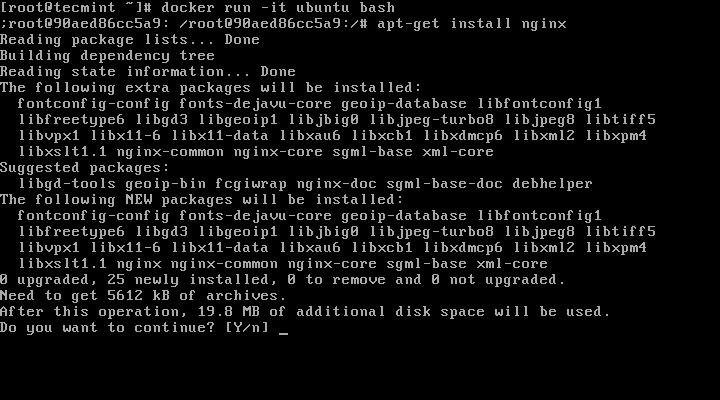

If you have not made any changes and have built the image once again, there is no cache break and the daemon simply uses the existing cache of the image layers to build the image. Hence, the COPY instruction cache breaks and so does the cache of all the subsequent instructions. Suppose you have already built this image previously and you have now made some changes in the build context. When you use the Docker build command to build a Docker image, you can simply use the -no-cache option which will allow you to instruct daemon to not look for already existing image layers and simply force clean build of an image.įor example, if you want to build an image from the following Dockerfile - FROM ubuntu:latest If you don’t want to allow the daemon to perform checks for cache at all, you can use the -no-cache option to do so.
DOCKER RUN IMAGE KEEP RUNNING INSTALL
RUN apt-get update & apt-get -y install vim Instead of using two separate lines for two consecutive RUN instructions, you can chain them to reduce the number of image layers and hence, reducing the possibility of a cache hit. In such a case, only the command string is compared to find the match. When the Docker daemon processes an update command such as RUN apt-get -y update, those packages inside the container on which the update commands work are not compared to determine if a cache hit takes place or not. This results in the build of separate image layers and build caches. In the above Dockerfile, we have used two different RUN instructions in separate lines. Let’s see how you can force clean build a Docker image.Ĭonsider the Dockerfile below. However, there might be situations where you want to force a clean build of the image even if the build cache of subsequent layers exists. If a subsequent cache is found, it will simply use this cache and not build a new layer. If you have previously built the same image, the daemon will look for a cache containing the same image layer. Each instruction mentioned inside a Dockerfile is responsible for creating a new layer.Ī layer only consists of the differences between the previous layer and the current layer. We all know that Docker images are multi-layered files containing multiple image layers on top of each other.

The same is the case when you try to build images using a Dockerfile. However, if a copy is not found, it starts pulling it from the registry. If it finds a match, then it’s not required to search the registry for the image and the daemon can simply create a copy of the already existing image. When you execute the Docker pull command or Docker run command, the daemon first checks for a similar image in the local machine by comparing the digests of the image.


 0 kommentar(er)
0 kommentar(er)
